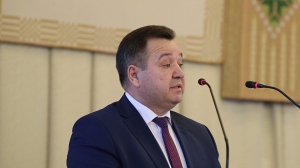Belarus discussing radiation situation data sharing with IAEA, European Commission

MINSK, 27 August (BelTA) – Belarus is in the process of discussing the scope and the procedure for sharing data about the radiation situation with the International Atomic Energy Agency (IAEA) and the European Commission, BelTA learned from Belarusian Natural Resources and Environmental Protection Minister Andrei Khudyk.
Due to the forthcoming launch of the Belarusian nuclear power plant the International Atomic Energy Agency and the European Commission have suggested Belarus should sign official agreements on sharing radiological data within the framework of the EURDEP and IRMIS systems. Suggestions were made regarding the intensification and the expansion of data sharing with regard to the data Belarus receives using automated radiation environment monitoring systems.
The official noted that radiation in Belarus has been monitored since 1963. Eight monitoring stations were in use till 1986. The network was expanded considerably after that. The decision to build the Belarusian nuclear power plant near Ostrovets was another milestone in developing the radiation monitoring system. A network of observation posts has been deployed in the area of the Belarusian nuclear power plant. Data is continuously collected by an automated system. The recorded figures will be used later as a measuring stick. It will allow defining the degree of the environmental impact of the nuclear power plant and working out measures to minimize the impact. International experts have positively evaluated the readiness of the National Center for Hydrometeorology, Radioactive Contamination Control, and Environmental Monitoring to respond to nuclear accidents. They also mentioned the high technological level of the agency.
As many as 41 stationary observation posts measure radiation in the atmospheric air in Belarus. Every day they measure the intensity of gamma radiation, the content of radionuclides in aerosol samples and atmospheric precipitation. The scope of radiation monitoring efforts of the Natural Resources and Environmental Protection Ministry also includes derelict lands, surface waters and subsurface waters.













